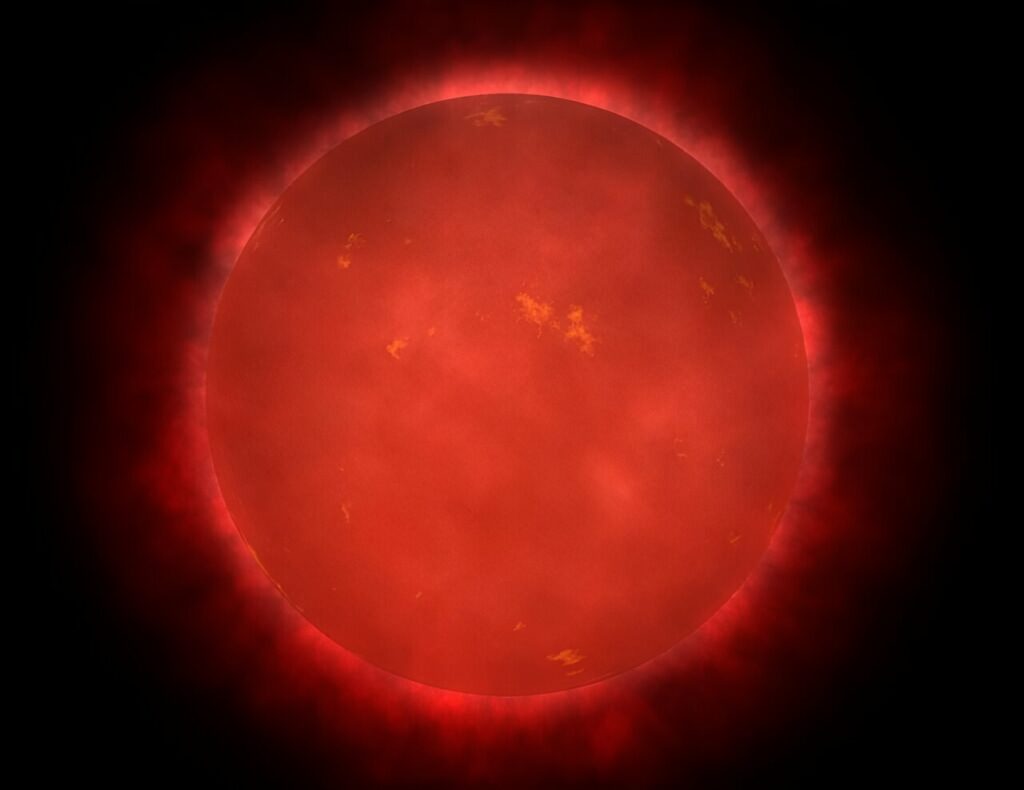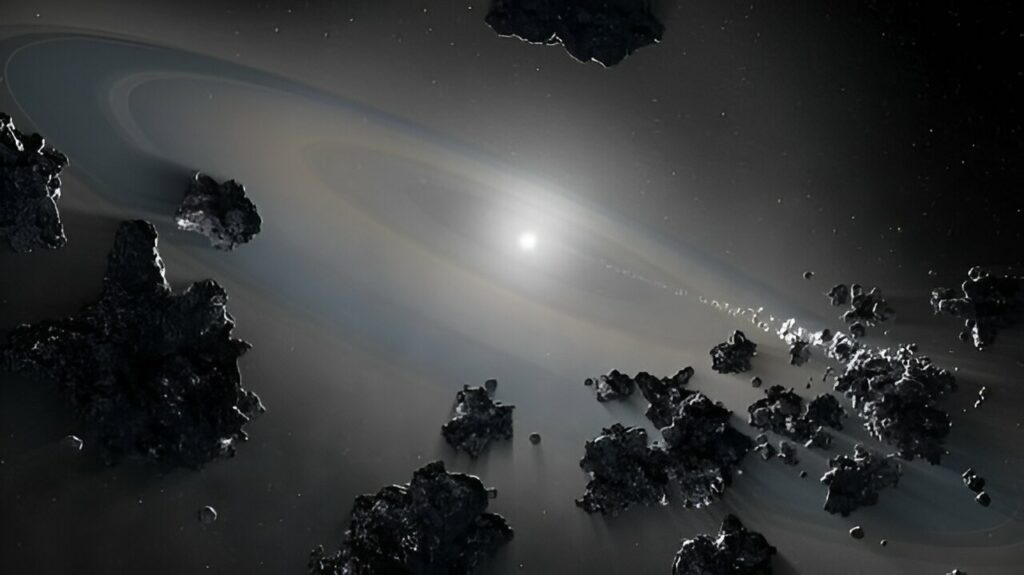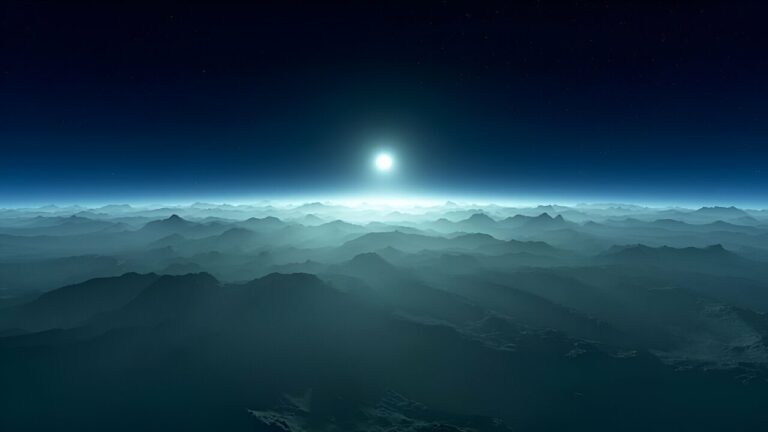Webb Captures Direct Images of Two Planets Circling White Dwarfs.
In a few billion years, the sun will transform into a white dwarf, and this transition will have implications for Jupiter and Saturn. Although life may continue to exist, the giant planets are expected to move farther away from the sun.
Unlike massive stars that end their lives in explosive supernovae, our sun is not massive enough for such an event. Instead, it will go through a phase known as a red giant, where it will exhaust its hydrogen fuel for fusion. This process is still being studied by astronomers. During the red giant phase, the star will shed layers of material into space, creating planetary nebulae. Eventually, the red giant will cease to exist, leaving behind a small yet incredibly dense white dwarf surrounded by the expelled material.
Scientists speculate that some white dwarfs may have debris disks around them, which could potentially give rise to new planets. There is also curiosity about whether planets can survive the transition from the main sequence to red giant to white dwarf.
Recent research conducted by the Space Telescope Science Institute, Goddard Space Flight Center, and other institutions has discovered two giant planets orbiting two white dwarfs in separate systems. The findings, titled “JWST Directly Images Giant Planet Candidates Around Two Metal-Polluted White Dwarf Stars,” are currently available as a preprint on arXiv. The lead author of this study is Susan Mullally, the Deputy Project Scientist for JWST.
Theoretical analysis suggests that exoplanets should exist in the vicinity of white dwarfs. Planets located beyond the asteroid belt in our solar system have the potential to survive the transition of their host star from the main sequence to a red giant and eventually to a white dwarf. However, stars within a certain limit will be consumed by the expanding red giant. In our solar system, it is highly likely that the sun will completely engulf or disrupt and destroy Mercury, Venus, Earth, and possibly even Mars.

The surviving planets are expected to gradually move away from their star due to the decrease in the star’s mass and weakening of its gravitational pull during the red giant phase.
Nevertheless, the detection of planets around white dwarfs poses a significant challenge. Despite dedicated efforts, astronomers have only managed to identify a small number of planetary-mass objects orbiting white dwarfs.
Currently, Mullally and her colleagues have identified two potential planets around white dwarfs. These planets are located at distances of approximately 11.5 and 34.5 astronomical units from their respective stars, which are estimated to be 5.3 billion and 1.6 billion years old. If the planets are indeed as old as the stars, MIRI photometry indicates that their masses range from 1 to 7 times that of Jupiter. While there is a possibility of false positives, the likelihood of that being the case is only 1 in 3,000.
The authors state that if these findings are confirmed, it would mark a significant milestone in our knowledge of exoplanets and their relationship with stars. These planets, if they indeed formed alongside the stars, would provide valuable insights into the formation and evolution of planetary systems. Additionally, the discovery could have implications for the potential habitability of any moons orbiting these planets.
However, the significance of this discovery extends beyond exoplanets. It also sheds light on another phenomenon associated with white dwarfs, known as White dwarf metallicity. Some white dwarfs exhibit traces of heavy elements, suggesting that they have been contaminated by metals originating from asteroids in the asteroid belt. It is believed that giant planets play a role in perturbing these asteroids and causing them to be drawn towards the white dwarfs. The confirmation of these planet candidates through future MIRI imaging would provide concrete evidence linking giant planets to the metal pollution observed in white dwarf stars.
Astronomers have observed that approximately 50% of isolated white dwarfs with hydrogen atmospheres possess metals in their photospheres, indicating an active accretion of metals from their surroundings. The most likely source of these metals is asteroids and comets. According to the authors, in this scenario, planets that survive the red-giant phase occasionally disrupt the orbits of asteroids and comets, causing them to migrate towards the white dwarf.
Overall, these findings have significant implications for our understanding of exoplanets, white dwarfs, and the intricate interactions between planets and their host stars.

Astronomers have faced challenges in their search for planets around white dwarfs. The commonly used methods, such as the transit method employed by Kepler and TESS, prove to be ineffective due to the small and dim nature of white dwarfs. Another method, known as the radial velocity method, detects the wobbling of a star caused by the influence of a planet and measures the resulting changes in the star’s spectrum. However, white dwarfs have spectra that lack distinct features, making it difficult to detect radial changes.
But now we have the JWST.
In their research paper, the scientists highlight the unique opportunity presented by the infrared capabilities of JWST to directly image Jupiter-mass planets orbiting nearby white dwarfs. The JWST possesses sufficient power to capture images of large planets around small stars without the need for a coronagraph, as long as the planets are sufficiently distant from the star. The researchers explain that by utilizing the exceptional resolution of JWST, it becomes feasible to directly image a planet located just a few astronomical units away from nearby white dwarfs, eliminating the need for a coronagraph.
A crucial aspect of this work involves identifying point sources, which are single, identifiable sources of light in astronomy. The researchers needed to ensure that the objects observed around the white dwarfs were indeed point sources, which are highly likely to be planets in this context. They state, “We anticipate that these objects will appear as point sources that exhibit increased brightness at longer wavelengths.”
To confirm the nature of these observed sources as point sources, astronomers employ a technique called reference differential imaging. This intricate process involves subtracting the sources from the images and proves particularly effective in detecting planets in close proximity to stars.

The team’s approach to analyzing the images involved subtracting both the white dwarf and the candidate planets, allowing them to identify the planets as point sources. The authors note that in both cases, the candidate is cleanly removed, indicating its point-source nature. The researchers studied four separate white dwarfs and found that only two of them have candidate exoplanets.
According to the authors, if these two planet candidates are confirmed, they would provide concrete observational evidence that outer giant planets, similar to Jupiter, can survive the evolution of low-mass stars. Additionally, this confirmation would support the notion that a significant percentage of white dwarfs, ranging from 25% to 50%, host large planets. This represents a significant advancement in our understanding.
However, these results do not provide a definitive answer to another question: Do large planets play a role in sending debris onto the surface of white dwarfs? Mullally and her co-authors emphasize that the confirmation of these planets alone is not enough to fully validate the idea that massive giant planets are responsible for accretion. Further observations are necessary.
To obtain an answer to this question, it is crucial to observe more white dwarfs, particularly with the James Webb Space Telescope (JWST). Hopefully, we will not have to wait long for these additional observations.
This article is republished from PhysORG under a Creative Commons license. Read the original article.
Do not forget to share your opinion with us to provide you with the best posts !




0 Comments